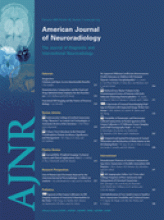F.A. Mettler Jr and A.C. Upton, eds. Philadelphia: Saunders Elsevier; 2008, 517 pages, 150 illustrations, $199.00.
According to the National Council of Radiation Protection (NCRP), 62 million CT scans were performed in the United States in 2006. From 1993 to 2006, the volume of CT scans increased at an annual growth rate greater than 10% per year. These data were obtained from an analysis of imaging procedures from more than 7600 hospitals. The total collective effective dose to the population was estimated at 438,000 person-sieverts. More than half of these scans were of the abdomen or pelvis, and 10% were performed on pediatric patients. One third of the scans may not have been medically unnecessary. During a period of rapid increases in ionizing radiation being used on patients for screening purposes, many performed in walk-in clinics or shopping centers not requiring a physician's order, radiologists need to be more cognizant of the risks and possible long-term effects as a result of these studies.
Brenner and Hall1 stated that the increase in CT scanning examinations is quite common in asymptomatic adult patients. The 4 areas with the most interest are CT colonography, CT lung screening for current and former smokers, CT cardiac screening, and CT whole-body screening. Most of the pediatric applications are in the abdomen for suspected appendicitis and in head and neck imaging. The fast scan time in children eliminates the need for anesthesia. Equivalent doses can average 10 to 15 mSv for an abdominal scan in adults and can be even higher in children.
It is critical for diagnostic radiologists to be knowledgeable of the risks and benefits of ionizing radiation. The third edition of Medical Effects of Ionizing Radiation is a comprehensive and detailed reference book essential to fully understanding all aspects of radiation exposure. This book is especially useful for neuroradiologists because of the large increase in the number of neurologic CT scans performed in this country. The first edition was published in 1985 and was written as a guide for health care professionals interested in the effects of ionizing radiation in humans. The second edition in 1995 was updated with new concepts of radiation protection, better understanding of the molecular and genetic basis of radiation carcinogenesis, and a greater understanding of the direct effects of radiation from the Chernobyl disaster. The third edition adds new information on the increased use of medical imaging, especially for screening asymptomatic people. It also adds further insight into the effect of low doses and epidemiologic information on site-specific cancer risks.
The text is very thorough and begins with basic radiation physics and biology. Topics covered include sources of radiation exposure, effects on genetic material, cancer induction and dose-response, radiation exposure in utero, and perception of radiation and psychologic effects. There is a significant explanation of deterministic effects (effects that require a minimal threshold dose level in which the effect increases with dose such as with exposure to the lens). There is also discussion of stochastic effects, which is the effect of most interest to diagnostic radiologists. In stochastic effects, no dose threshold is required, and even a single ionizing event can lead to cell death, oncogenic change expressed as a malignant process as long as 40 years after exposure, or as mutational damage.
An alternate text and reference is available that is written specifically for radiologists, Radiobiology for the Radiologist, 6th Edition (Lippincott, Williams & Wilkins; 2005). It is 3 years older but is a much smaller and simpler text to comprehend and is not as thorough or extensive.
My only suggestion for Medical Effects of Ionizing Radiation would be a greater use of photographs and other illustrations such as radiographs. Their use in the text is very limited, with more emphasis on tables and graphs.
A very useful section in this text is the extensive glossary and numerous reference tables. The physical characteristics, including radiation dose and half-life, are listed for all radionuclides. There are conversion tables for units, dose coefficients for intakes of radionuclides by workers, and normal tissue radiotoxicity tables.
In summary, Medical Effects of Ionizing Radiation is a useful addition to the reference library of radiologists, medical physicists, radiation biologists, and other health care professionals dealing with the risks and benefits of ionizing radiation. It will be of assistance in effectively treating patients and avoiding complications. New medicolegal concerns are thoroughly addressed, including the risk for cancer induction and exposure of pregnant women.
- Copyright © American Society of Neuroradiology













